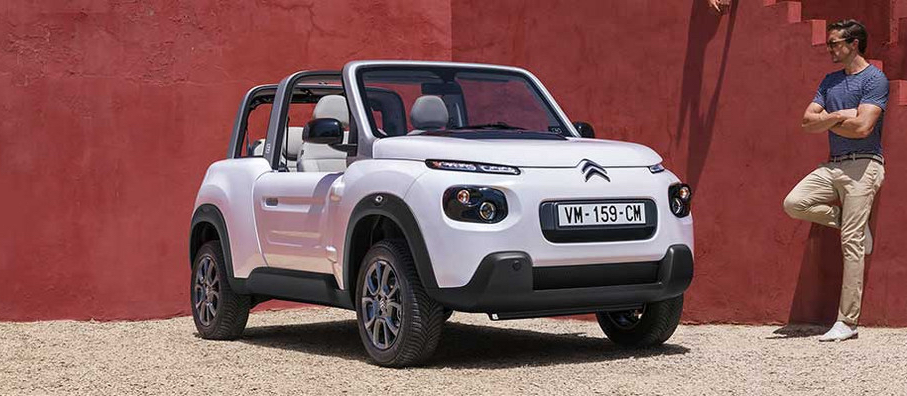SPONSOR: New Age Metals Inc. The company’s Lithium Division has already made significant acquisitions in Canada and the USA. The company also owns one of North America’s largest primary platinum group metals deposit in Sudbury, Canada. Updated NI 43-101 Mineral Resource Estimate 2,867,000 PdEq Measured and Indicated Ounces, with an additional 1,059,000 PdEq Ounces in the Inferred. Learn More.

Europe EVs now use 57% more lithium carbonate equivalent
- Changing mix of EV sales is most noticeable in Europe where the average battery in new passenger EVs sold in September contained 15.8kg of LCE
- Constitutes a 57% surge compared to last year, thanks in no small part to the popularity of the Tesla Model 3 on the continent

CItroën e-Méhari. Batteries for the electric SUV are produced in France. Image: PSA Group
By: Frik Els
Electric car pioneer Tesla is already producing units on a trial basis at its giant Shanghai gigafactory despite only breaking ground this year, but thanks to changes to the Chinese EV subsidy program, demand for locally-made Teslas may fall short of expectations.
On Monday, China’s automobile manufacturing industry body said fewer new energy vehicles, or NEVs as they are termed domestically, could be sold this year than in 2018 (last year sales boomed by more than 60%).
Sales of NEVs – which apart from battery-powered vehicles also include hybrids and fuel cell cars – fell by more than 45% in October from the same month last year, adding to the woes of an industry coping with 16 straight months of declining overall sales.
Changes to China’s EV incentive program favour hybrids so lithium loads may start to tend downwards in that country too
Adamas Intelligence tracks the battery capacity (and the metals used in them) of electric vehicles sold around the world and the slowdown in the EV market, where lithium-ion batteries dominate, has already showed up in raw material deployment data.
In September 2019, the average new passenger EV including plug-in and conventional hybrids sold globally contained 12.2 kilograms of lithium carbonate equivalent (LCE), a modest increase of 4% over 2018, according to the latest Adamas report.
The Toronto-based research company’s data shows China still outstripped global growth in September with a 7% increase in LCE on a per-EV basis, reaching a sales-weighted average of just shy of 20kg thanks to the prevalence of full electric models in the country.
That’s in stark contrast to Japan, where hybrids represent more than 90% of EV sales and average batteries contain only 1.1kg of LCE. Changes to China’s EV incentive program favour hybrids so lithium loads may start to tend downwards in that country too.
The changing mix of EV sales is most noticeable in Europe where the average battery in new passenger EVs sold in September contained 15.8kg of LCE.
That constitutes a 57% surge compared to last year, thanks in no small part to the popularity of the Tesla Model 3 on the continent. Teslas have always had bigger batteries than competitor cars to help with fast-charging and range.
In the US the trend is in the opposite direction – with passenger EVs leaving showrooms containing on average 15.2kg of LCE, 12% less than in September 2018.
Source: https://www.mining.com/lithium-price-europe-evs-now-use-57-more-lce/
Tags: clean energy, CSE, palladium, PGM, PGM Demand, stocks, tsx, tsx-v